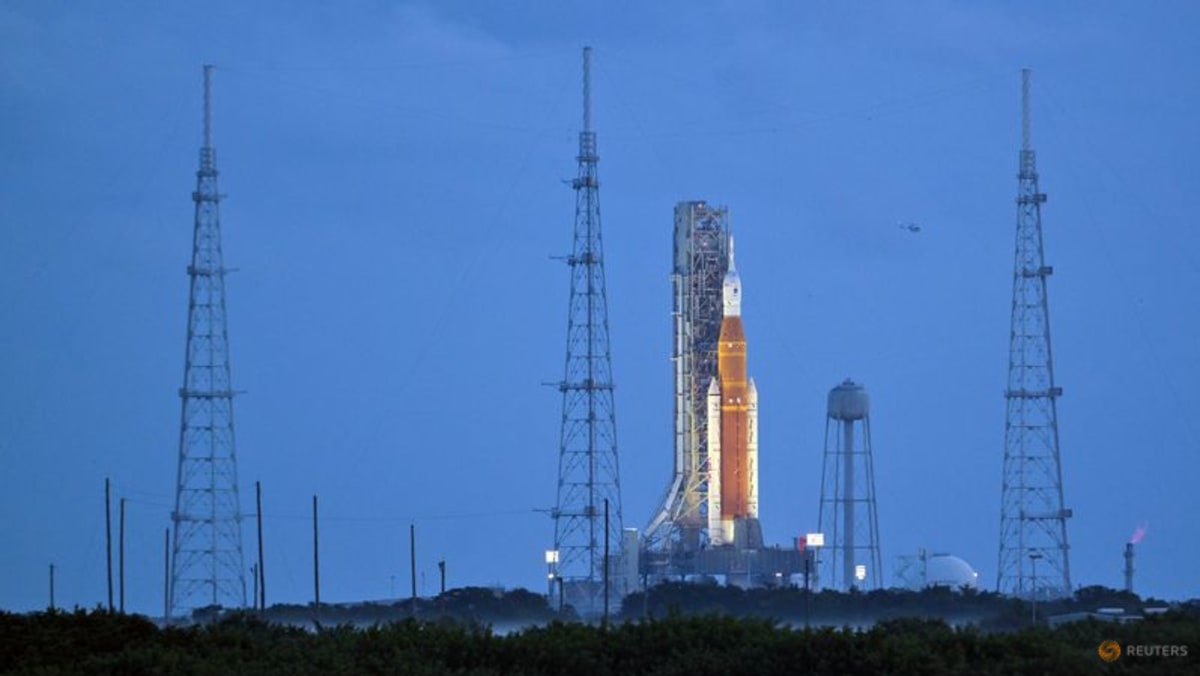NASA’s next-generation Artemis moon rocket tanks up for debut launch
CAPE CANAVERAL, Florida: Ground teams at the Kennedy Space Center on Saturday (Sep 3) began fueling NASA’s giant, next-generation rocketship for its debut launch on an uncrewed test flight to the moon, five days after an initial liftoff attempt was thwarted by technical problems.
The 32-story tall Space Launch System (SLS) rocket and its Orion capsule were due for blastoff from Cape Canaveral, Florida, at 2.17pm EDT (1817 GMT), kicking off the US space agency’s ambitious moon-to-Mars Artemis program 50 years after the last Apollo lunar mission.
The previous launch bid on Monday was halted by engineering snags. NASA says technicians have since remedied the issues.
Weather is an additional factor beyond NASA’s control. The latest forecast saw a 70 per cent chance of favorable conditions during Saturday’s two-hour window, according to the US Space Force at Cape Canaveral.
Before dawn, launch teams started the lengthy, delicate process of filling the rocket’s core-stage fuel tanks with several hundred thousand gallons of super-cooled liquid oxygen and liquid hydrogen propellant.
Engineers stopped loading liquid hydrogen around 7.30am, roughly an hour into the complex process, to fix a leak.
If the countdown were halted again, NASA could reschedule another launch attempt for Monday or Tuesday.
Dubbed Artemis I, the mission marks the first flight for both the SLS rocket and the Orion capsule, built under NASA contracts with Boeing and Lockheed Martin, respectively.
It also signals a major change in direction for NASA’s post-Apollo human spaceflight program, after decades focused on low-Earth orbit with space shuttles and the International Space Station.
Named for the goddess who was Apollo’s twin sister in ancient Greek mythology, Artemis aims to return astronauts to the moon’s surface as early as 2025, though many experts believe that time frame will likely slip.
Twelve astronauts walked on the moon during six Apollo missions from 1969 to 1972, the only spaceflights yet to place humans on the lunar surface. But Apollo, born of the US-Soviet space race during the Cold War, was less science-driven than Artemis.
The new moon program has enlisted commercial partners such as SpaceX and the space agencies of Europe, Canada and Japan to eventually establish a long-term lunar base of operations as a stepping stone to even more ambitious human voyages to Mars.
SPACEFLIGHT STRESS TEST
Getting the SLS-Orion spacecraft off the ground is a key first step. Its first voyage is intended to put the 2,600-tonne vehicle through its paces in a rigorous test flight pushing its design limits and aiming to prove the spacecraft suitable to fly astronauts.
If the mission succeeds, a crewed Artemis II flight around the moon and back could come as early as 2024, to be followed within a few more years with the program’s first lunar landing of astronauts, one of them a woman, with Artemis III.
For all the latest world News Click Here

